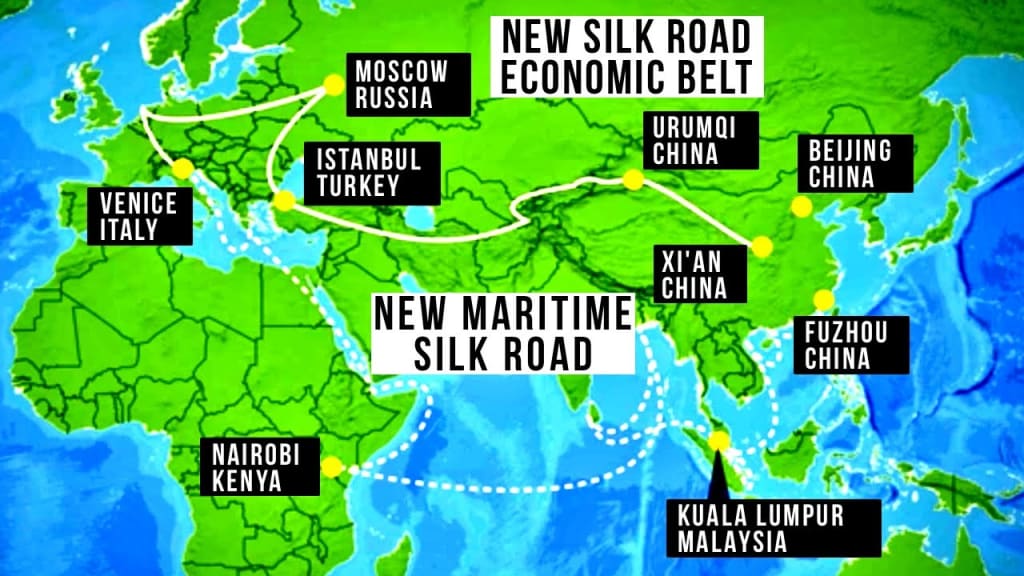
CRITICISMS AND CHALLENGES OF THE NEW SILK ROAD
Although the New Silk Road has aroused interest and participation from many countries, it has also faced criticism and challenges. Some of the concerns and discussion points are:
Debt and dependency: There is concern about the debt burden that the countries receiving Chinese investment may acquire. Some infrastructure projects can be expensive and lead to an increase in the national debt. In addition, there are concerns about the economic and political dependency that countries could face if their economy becomes highly dependent on China.
Lack of transparency: The lack of transparency in the agreements and contracts associated with the New Silk Road has been criticized. Some critics argue that the terms of the agreements are unclear and that opacity can lead to corruption and a lack of accountability.
Environmental impact: Large-scale infrastructure construction can have a significant impact on the environment. Concerns have been raised about the degradation of fragile ecosystems, air and water pollution, as well as the exacerbation of climate change due to greenhouse gas emissions associated with transportation and production.
Geopolitical conflicts: China's growing influence through the New Silk Road has raised concerns in some countries and regions. There are fears that China is using the initiative to strengthen its strategic position and exercise political influence in sensitive areas, which could trigger geopolitical tensions and competition with other powers.
Logistical and security challenges: Implementing the New Silk Road involves overcoming logistical challenges, such as building infrastructure in difficult terrain or in areas with ongoing conflicts. In addition, the security of trade routes and infrastructure is a major concern, especially in regions that are unstable or affected by terrorism.
These challenges and criticisms raise questions about the viability, sustainability, and long-term benefits of the New Silk Road. Some countries and international actors advocate for greater transparency, fairness in agreements, and a sustainable and responsible approach that addresses environmental and social concerns.
In short, the New Silk Road faces challenges and criticism in terms of debt and dependency, lack of transparency, environmental impact, geopolitical conflicts, and logistical and security challenges. These aspects need to be addressed and taken into account to ensure that the economic benefits and regional integration are equitable and sustainable in the long term. The development and final result of this initiative continue to be topics of discussion and evaluation in the international community.
RESPONSES AND ADAPTATIONS TO CHALLENGES
As the challenges and criticisms associated with the New Silk Road have been identified, responses and adaptations have been proposed to address them. Some of these answers include:
Greater Transparency and Governance: To address concerns about a lack of transparency, China and investor countries have been urged to adopt more transparent governance practices. This implies the disclosure of the terms of the agreements, the participation of the interested parties and the rendering of accounts in the implementation of the projects.
Sustainability assessment: To mitigate environmental impacts, the importance of carrying out comprehensive sustainability assessments in infrastructure projects has been highlighted. This implies considering the long-term environmental, social and economic impacts, as well as the implementation of measures to minimize the negative effects.
Regional and multilateral cooperation: Given the fears of geopolitical conflicts, the importance of promoting regional and multilateral cooperation has been highlighted. This implies the active participation of multiple actors, including neighboring countries, international organizations and other global powers, to promote an inclusive and rules-based approach to connectivity development.
Diversification of funding sources: To address concerns about debt and dependency, it has been recommended to diversify funding sources for New Silk Road projects. This means engaging international financial institutions, such as the World Bank and the Asian Development Bank, as well as other countries and economic actors to share the financial burden and reduce reliance on a single source.
Strengthening security and risk mitigation: In order to face logistical and security challenges, the need to strengthen security measures on trade and investment routes has been raised. This implies security cooperation between the countries involved, as well as the adoption of measures to mitigate the risks associated with conflicts and illegal activities.
These responses and adaptations reflect recognition of the challenges and a willingness to address them constructively. However, the effective implementation of these measures will require continued commitment and close collaboration between the countries involved, as well as constant monitoring and evaluation to ensure their effectiveness.
CONCLUSION
The New Silk Road is an ambitious initiative that seeks to boost connectivity and trade between Asia and Europe through a network of infrastructures. While it has generated excitement and economic opportunity, it has also faced criticism and challenges in terms of debt, transparency, environmental impact, geopolitics, and security.
Solving these challenges will require a collaborative approach.
If you like it, don't forget to share it with your friends, thanks!





Comments
There are no comments for this story
Be the first to respond and start the conversation.